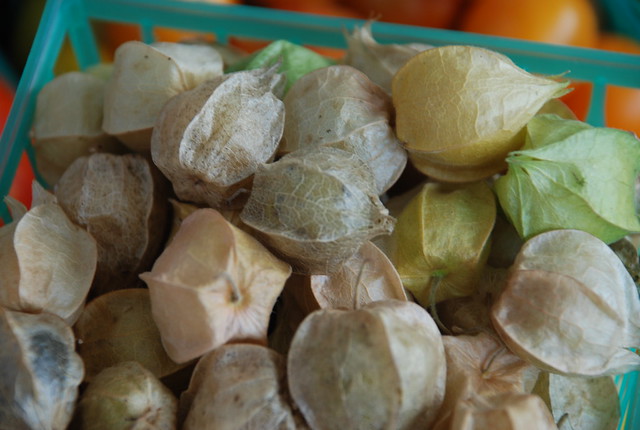Since there are only five of us celebrating, buying a turkey would just be too much food, and we wanted to change it up a bit, so we decided to roast some quail. Quail is mostly dark meat, and you'll need one or two per person, so if you're cooking for the whole family, I'd stick with a turkey. Many people think of quail as a luxury food, only served in high end restaurants, but they're actually fairly cheap and delicious. Rather than making mashed potatoes, we're going to add some texture by making a potato 'risotto,' and because no feast is complete without a salad, we'll also make a simple shaved fennel salad.
Crispy Roasted Quail with Potato 'Risotto' and Shaved Fennel
Yields enough for a five person meal
Ingredients:
Quail
10 quail
2 bunches of thyme
10 large collard green leaves, cut into small chunks
2 cloves of garlic, minced
Kosher salt and black pepper, to taste
Potato 'Risotto'
3 lbs waxy potatoes, such as Yukon Gold or Red Bliss, diced into about 1/4 inch cubes
3 shallots, diced
2 tbsp unsalted butter
chicken stock or water, as needed
1/4 cup heavy cream
grated Parmesan cheese, to taste
Kosher salt and black pepper, to taste
Shaved Fennel
2 medium-large bulbs of fennel, shaved as thin as possible on a mandolin
1/3 cup rice vinegar
1/4 cup red wine vinegar
1 cup olive oil
Kosher salt, pepper, sugar, and thyme leaves, to taste
Quail
Preheat your oven to 400 degrees Fahrenheit. bring a large pot of water to a boil, and blanch your collard greens for about one minutes, then remove them into an ice bath. Once they are cool, transfer them to a bowl with the garlic and season to taste with salt and pepper. Season the quail well with salt and pepper, and stuff the cavity with your collard greens. holding the drumsticks together, push the legs of each quail in towards the body to plump it up, then tie a piece of string, first around the drumsticks to hold them together, then around the body to keep the legs tucked in. This will promote even cooking and a nice shape to the finished bird. In an oven proof skillet, heat about 1/8 inch of cooking oil (I like to use avocado oil because of its high smoke point) and once it is hot, add your quail, breast side down. Once the skin on the breast is seared and crispy, flip your quail over, add the thyme branches to the pan, and transfer it to the oven. After 10 minutes, remove the quail from the oven and baste it with the juices in the pan. Transfer it back to the oven for another five minutes, or until t is cooked to your desired doneness.
Potato 'Risotto'
In a large pan, at least a couple inches deep, heat a small amount of cooking oil and sauté the shallots. When they are soft, add the potatoes an
d season with salt and pepper. Cook the potatoes, stirring occasionally, for about 5 minutes, or until most of them are nicely seared. Add enough stock to barely cover them, and cook, stirring frequently, until almost all of the liquid is absorbed. Continue adding stock, about 3 tablespoons at a time, waiting for each addition to dissipate before adding the next, until the potatoes are tender. To finish, add the cream, butter, and cheese. Taste and adjust your seasoning if necessary.
Shaved Fennel
in a blender, combine all of the ingredients except the fennel and blend, tasting occasionally and adjusting seasoning, until the vinaigrette is frothy and emulsified. In a large bowl, toss the fennel with just enough vinaigrette to coat it. The rest of the vinaigrette can be saved in the fridge for further use.















































